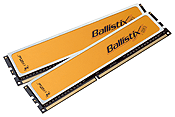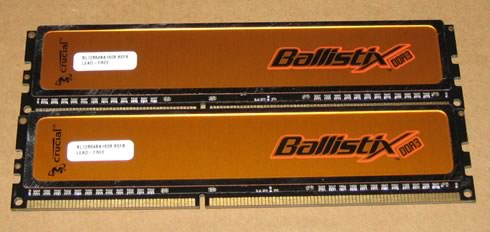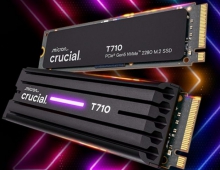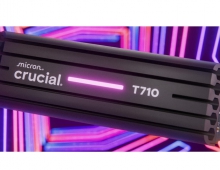Crucial BallistiX DDR3-1600
1. Introduction
 Crucial, a division of Micron, recently announced a new series of DDR3 memory modules based on Micron chipsets. The new memory has all the features needed to become a competitive product on the market. Apart from testing how fast this DDR3 memory can go, we were also curious to see how it would perform against another DDR3 products with similar specs, such as the SuperTalent PC3-1600CL7. But first, let's meet the Crucial Ballistix DDR3-1600 series.
Crucial, a division of Micron, recently announced a new series of DDR3 memory modules based on Micron chipsets. The new memory has all the features needed to become a competitive product on the market. Apart from testing how fast this DDR3 memory can go, we were also curious to see how it would perform against another DDR3 products with similar specs, such as the SuperTalent PC3-1600CL7. But first, let's meet the Crucial Ballistix DDR3-1600 series.
- Crucial Ballistix BL2KIT12864BA1608 — The ultimate in gaming performance
 The Ballistix line is specifically built for performance enthusiasts who want to push the performance envelope without worrying about data loss or corruption, mysterious intermittent errors and display problems, or worse — the dreaded BSOD! The Ballistix line of high-performance memory modules features advanced speed grades, low latencies, and integrated aluminum heat spreaders.
The Ballistix line is specifically built for performance enthusiasts who want to push the performance envelope without worrying about data loss or corruption, mysterious intermittent errors and display problems, or worse — the dreaded BSOD! The Ballistix line of high-performance memory modules features advanced speed grades, low latencies, and integrated aluminum heat spreaders.

A Ballistix dual inline memory module (DIMM) consists of a number of memory components that are attached to a black printed circuit board. The gold pins on the bottom of the DIMM provide a connection between the module and a socket on a larger printed circuit board. The pins on the front and back of a DIMM are not connected to each other.
Ballistix 240-pin DIMMs are found in DDR3 memory. DDR3 — the next generation of memory — boasts an improved architecture allowing very fast data transmission. Ballistix 240-pin DIMMs are available in DDR3 PC3-12800 SDRAM (DDR3-1600).
- Main features
- Module Size: 2GB kit (1GBx2)
- Package: Ballistix 240-pin DIMM
- Feature: DDR3 PC3-12800
- Configuration: 128Meg x 64
- DIMM Type: UNBUFFERED
- Error Checking: NON-ECC
- Speed: DDR3-1600
- Voltage: 1.8V
- Memory Timings: 8-8-8-20
- Retail package
Crucial provided us with the retail package of their 2x1GB Ballistix PC3-12800 series. The retail price is around US$680, and the modules can be obtained directly from Crucial. The kit we received arrived in our labs in a common carton box, with the memory modules packed inside antistatic plastic bags.



After removing the memory modules from the plastic bags, we see that from a first look, there aren't many changes compared with the BallistiX DDR2 series. Certainly, there are fewer logos, on both sides of the product.


After installing the memory, we used CPU-Z to get more information. Crucial's DDR3-1600 supports the new Intel extension, "XMP", while it also has the "standard" JEDEC timings embedded for 533 and 609MHz:

Extreme Memory Profile (XMP) technology comes from Intel. Extreme memory profiles (XMP) are SPD (Serial Presence Detect) settings that are activated once memory modules are installed into a system with a mainboard that supports such settings. It is projected that XMP will be supported by mainboards based on Intel X38 chipset and will allow memory modules to function at higher clock-speeds with aggressive latency settings to provide additional performance.





















